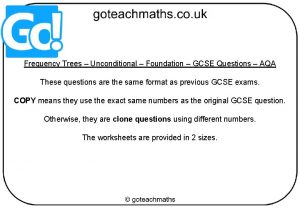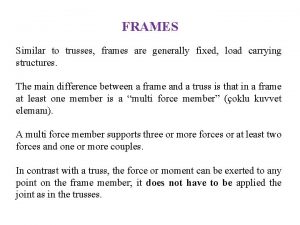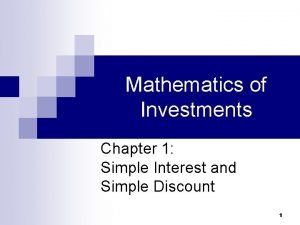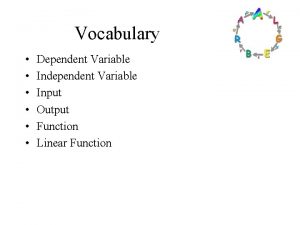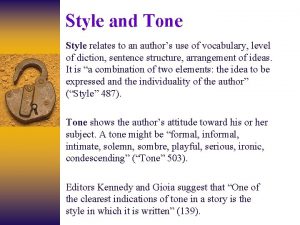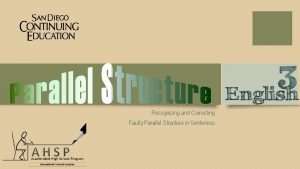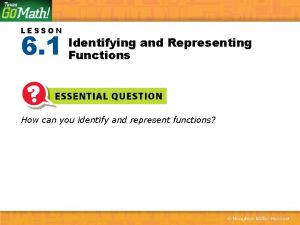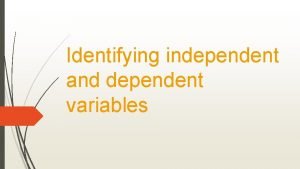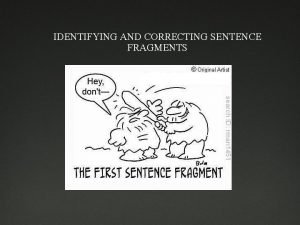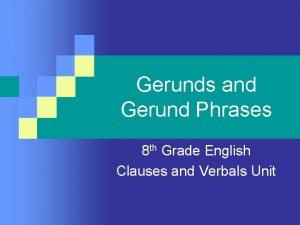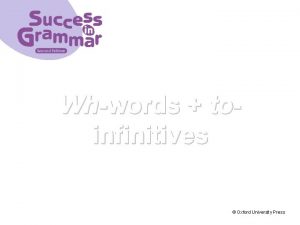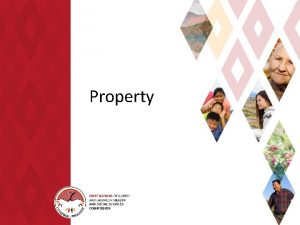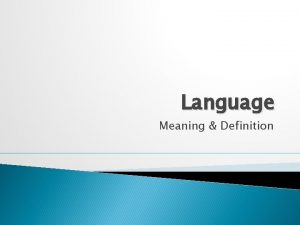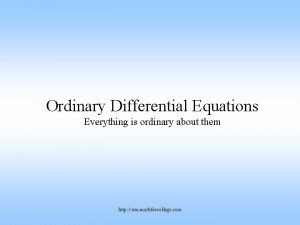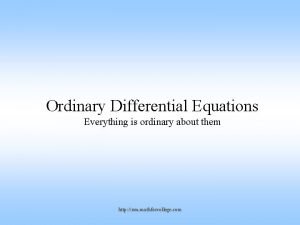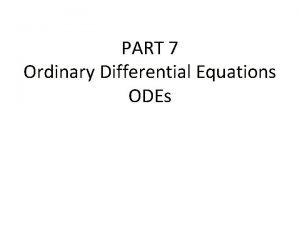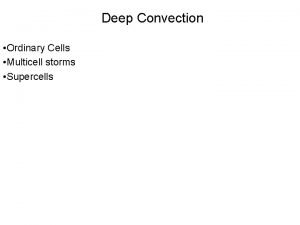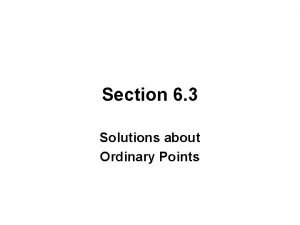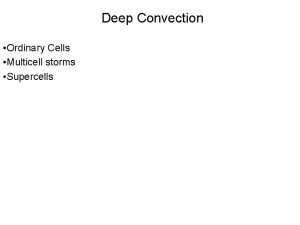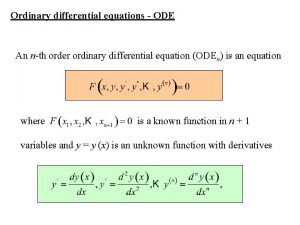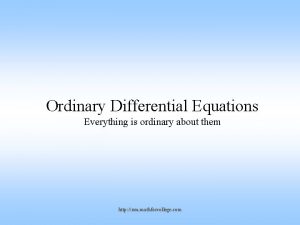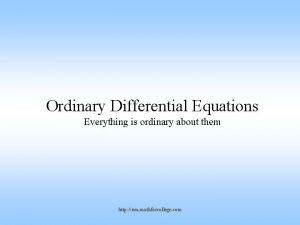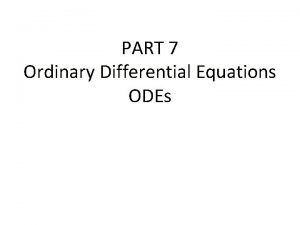Ordinary property and identifying property whwords two kakojs




















![Two kakoj-s in indefinite pronouns (13) Kakuju žizn’ ty xočeš prožit’? ‘What life [do] Two kakoj-s in indefinite pronouns (13) Kakuju žizn’ ty xočeš prožit’? ‘What life [do]](https://slidetodoc.com/presentation_image/c6a45b611fcbc708b5ad8a9dcb3de712/image-21.jpg)






- Slides: 27

Ordinary property and identifying property wh-words: two kakoj-s in Russian Igor Yanovich Moscow State University FSIM 2, April 15, 2006

Roadmap 1. Russian -to and -nibud’ and the kakoj-to problem. 1. Traditional theories: inconsistent meanings for kakoj-to. 2. Yanovich 2005: consistent, but clearly wrong meanings for kakoj-to. 2. The solution: two kakoj-s. 3. Deriving the right meanings for kakoj-to.

kakoj-to and kakoj-nibud’ kakoj ‘what/which’ wh-adjective + -to / -nibud’ indefinite pronoun series marker = kakoj-to / kakoj-nibud’ adjective indefinite pronouns

-to and -nibud’ It is uncontroversial that the import of -to and -nibud’ markers is somehow “related to” reference. (1) Kto-to prišel. who-TO came ‘Someone came. ’ With -to added, “who” becomes “someone”.

-to and -nibud’ Just for comparison: other series markers (2) Mnogo kto prišel. Many who came ‘Many (people) came. ’ (3) Nikto prišel. NEG-who came ‘No one came. ’

-to and -nibud’ Traditionally, it is established that both -to and -nibud’ pronouns contain (something like) an existential quantifier. (4) a. Petja xočet, čtoby kto-to prišel. ‘Petja wants that someone came. ’ b. Petja xočet, čtoby kto-nibud’ prišel. ‘Petja wants that someone came. ’

-to and -nibud’: the difference The difference between the two is that a -nibud’ pronoun needs a (ccommanding) licenser, while a -to pronoun does not: (5) a. Kto-to prišel. b. *Kto-nibud’ prišel.

-nibud’ licensers Licensers: • quantificational DPs (every boy); • quantificational adverbs (always); • intensional verbs (want); • if-clauses… Important: not negation! See Padučeva 1985, 2004, Yanovich 2005.

-nibud’ licensers A -nibud’ pronoun may not scope over its licenser: (6) Každyj mal'čiki budet rad Every boyi will be glad esli Æi vstretit if [hei] will-meet kogo-nibud' iz svoix odnoklassnic. who-NIBUD' of the girls in his class Wide: Intermediate: Narrow: * > " > if OK " > if >

-to and -nibud’ This basic distributional difference between the two series was captured by all traditional accounts – though in an unprincipled manner, that is, in the form of a filter on possible meanings for sentences containing -to and -nibud’. However, leaving that aside, there is a purely internal problem for traditional accounts, concering kakoj-based pronouns.

The problem with kakoj Traditional accounts assign to (7) meanings as in (8): (7) a. Každaja devočka uvidela kakogo-to kotenka. Every girl saw which-TO kitten. b. Každaja devočka uvidela kakogo-nibud’ kotenka. Every girl saw which-NIBUD’ kitten. (8) a. Wide-scope reading, OK for (7 a) only: ∃x: kitten(x) ∀y: girl(y) [saw(x)(y)] b. Narrow-scope reading, OK for (7 a, b): ∀y: girl(y) ∃x: kitten(x) [saw(x)(y)]

The problem with kakoj The problem is that to derive (8), we must accept that the interpretational import of the whole kakoj-based pronoun is equal to the import of the series marker in all other pronouns: (7) Každaja devočka uvidela kakogo-to kotenka. Every girl saw which-TO kitten. (8) Wide-scope reading: ∃x: kitten(x) ∀y: girl(y) [saw(x)(y)] (9) Každaja devočka uvidela kogo-to Every girl saw who-TO. ∃x: human(x) ∀y: girl(y) [saw(x)(y)]

The problem with kakoj Padučeva 2004: «местоимение типа какой-нибудь выражает квантор существования в контексте подчиняющего оператора» [“A pronoun of the kakojnibud’ type expresses an existential quantifier in the context of an embedding operator”. ] But just the affix -nibud’ makes the same thing!

A theory? Of course, a beautiful theory would assign unified meanings to the series markers, and different meanings for whole pronouns, such as kakoj-nibud’. E. g. , Yanovich 2005 does just that (it may be not very beautiful, though).

A choice-functional theory Y 1: WH-roots denote sets of Hamblin alternatives Y 2: -to and -nibud’ denote (Hamblin) Choice Functions. Y 3: -nibud’ denotes an already skolemized Choice Function (cf. Kratzer 1998). Its licensers are quantificational expressions (be it quantification over individuals, situations, or worlds.

A choice-functional theory However, there is a problem for a beautiful theories addict: this theory cannot get the meanings in (8)! It predicts the following: (10) a. OK for (1 a): ∃p such that for every girl y, kitten(x) & p(x) & saw(x)(y). b. OK for (1 a, b): For every girl y, ∃p such that kitten(x) & p(x) & saw(x)(y)’.

Traditional view vs. “CF” view (7) Každaja devočka uvidela kakogo-to kotenka. Every girl saw which-TO kitten. Wide-scope reading Traditional accounts: There is a kitten such that every girl saw it. Yanovich 2005: There is a property P such that there is a kitten and the girl saw it.

Traditional view vs. “CF” view While Yanovich’s 2005 theory provides a more principled analysis of these pronoun series than the traditional accounts, it is not consistent with the speaker’s intuitions – at least, at first sight. More puzzles: Most speakers accept that (7) may have only the meaning as in (8). However, there are some, that allow both for (8) and (10), though (8) is definitely more natural even for this group.

The solution I propose will not allow Yanovich 2005 to directly derive (8), but it will be possible to derive meanings which entail (8). The idea: let there be two kakoj roots. (11) [[kakoj 1]] = {p et } – the set of all properties (12) [[kakoj 2]] = = {p et | ∃x p(x) & (¬∃y p(y) & x ≠ y)} – the set of all IDENTIFYING properties

Different kakoj-s in questions kakoj 2 is stronger (=more restrictive) than kakoj 1. A question with kakoj 1 is about all properties some object has. A question with kakoj 2 is only about those properties that uniquely identify the individual of which they hold.
![Two kakojs in indefinite pronouns 13 Kakuju žizn ty xočeš prožit What life do Two kakoj-s in indefinite pronouns (13) Kakuju žizn’ ty xočeš prožit’? ‘What life [do]](https://slidetodoc.com/presentation_image/c6a45b611fcbc708b5ad8a9dcb3de712/image-21.jpg)
Two kakoj-s in indefinite pronouns (13) Kakuju žizn’ ty xočeš prožit’? ‘What life [do] you want to live? ’ => (more probably, ) kakoj 1 (14) Kakuju knigu (iz etix dvux) ty xočeš? ‘Which book (of these two) [do] you want? ’ => (more probably, ) kakoj 2

Different kakoj-s in questions (15) IDENT =def {p t : x p(x) & ( y p(y) & x y)} (16) [[kakoj 2]] = IDENTe [[to]] = P. f(P), P set of alternatives, f a choice function (from Yanovich 2005) [[kakoj 2 -to]] et = f(IDENTe) [[kakoj 2 -to mal’čik]] = x. f(IDENTe)(x) & boy(x), f a choice function = = ‘true of all individuals who are boys, and of which an identifying property chosen by a choice function f (supplied by the context) holds. ’

What do we get? (7) Každaja devočka uvidela kakogo-to kotenka. Every girl saw which-TO kitten. Wide-scope reading for (7): (17) [∃x kitten(x)] ∀y: girl(y) [∃x kitten(x)] (f(IDENTe))(x) & [saw(x)(y)] Important: it does not matter where ∃x (=the whole indefinite DP) scopes! Because even if it is under ∀, all properties that f(IDENTe) may choose are true of only one individual.

What do we get? (17) Our new kakoj 2 wide-scope meaning for (7): [∃x kitten(x)] ∀y: girl(y) [∃x kitten(x)] (f(IDENTe))(x) & [saw(x)(y)] (8) The traditional wide-scope meaning for (7): ∃x: kitten(x) ∀y: girl(y) [saw(x)(y)] When (17) is true, the context provides a function that chooses an identifying property p which holds of some kitten x, and every girl saw a kitten x of which p holds. Since p holds of only one individual, all kittens seen by different girls are in fact the same kitten. Thus (8) holds. (17) => (8)

What do we get? (18) Our new kakoj 2 narrow-scope meaning for (7): [∃x kitten(x)] ∀y: girl(y) [∃x kitten(x)] (f(IDENTe)(y))(x) & [saw(x)(y)] (8 -1) The traditional narrow-scope meaning for (7): ∀y: girl(y) ∃x: kitten(x) [saw(x)(y)] When (18) is true (on the narrow scope of the kitten DP), the context provides a function f that chooses for every girl y an identifying property py = f(y) which holds of some kitten x, and every y saw a kitten x of which f(y) holds. Thus (8 -1) follows, but (8) does not, as f(y) may choose different x-s for different y-s. (18) ===> (8 -1) (18) =/=> (8)

Conclusion Just as I promised, we were not able to directly derive the readings in (8), but we have generated readings that entail (8)-style readings, using kakoj 2. On the other hand, if we would use kakoj 1, we would end up with meanings such as those in (10). Thus if we accept that there are two kakoj-s, we can both maintain a principled account of -to and nibud’ meanings, and to make predictions that are consistent with speakers’ intuition for kakojsentences.

Thank you! iyanovich@mail. ru
 Whwords
Whwords Identifying and non identifying adjective clauses
Identifying and non identifying adjective clauses How to identify clauses
How to identify clauses Information essential
Information essential Frequency trees
Frequency trees Identifying two force members
Identifying two force members Sapratibandha daya and apratibandha daya
Sapratibandha daya and apratibandha daya Is smell a physical property
Is smell a physical property Associative property vs commutative property
Associative property vs commutative property Ordinary and exact interest formula
Ordinary and exact interest formula Enamel hatchet formula
Enamel hatchet formula How to identify dependent and independent variable
How to identify dependent and independent variable Descriptive tone
Descriptive tone Tone of author
Tone of author Identify oxidizing and reducing agents practice
Identify oxidizing and reducing agents practice I have always enjoyed reading the book more than
I have always enjoyed reading the book more than Mis bidgoli
Mis bidgoli Lesson 6 identify functions answer key
Lesson 6 identify functions answer key Identifying the inquiry and stating the problem
Identifying the inquiry and stating the problem What is dependent variable in math
What is dependent variable in math Identifying sentence fragments
Identifying sentence fragments Gerund of win
Gerund of win Identifying market segments and targets chapter 9
Identifying market segments and targets chapter 9 Identifying market segments and targets chapter 9
Identifying market segments and targets chapter 9 Project identification and selection process
Project identification and selection process Identifying even and odd functions
Identifying even and odd functions Identifying percentage rate and base
Identifying percentage rate and base Mixtures compounds and solutions worksheet
Mixtures compounds and solutions worksheet




